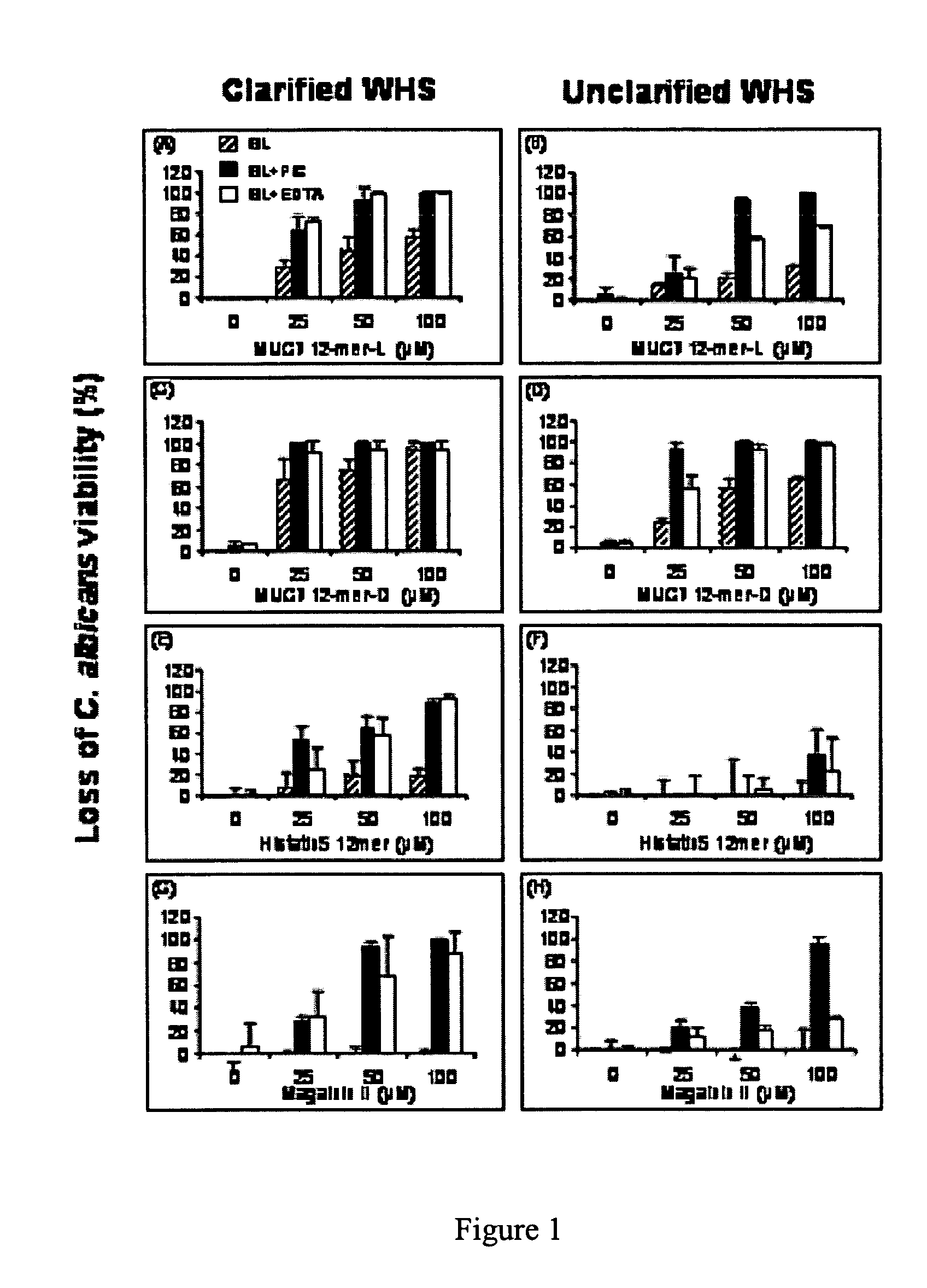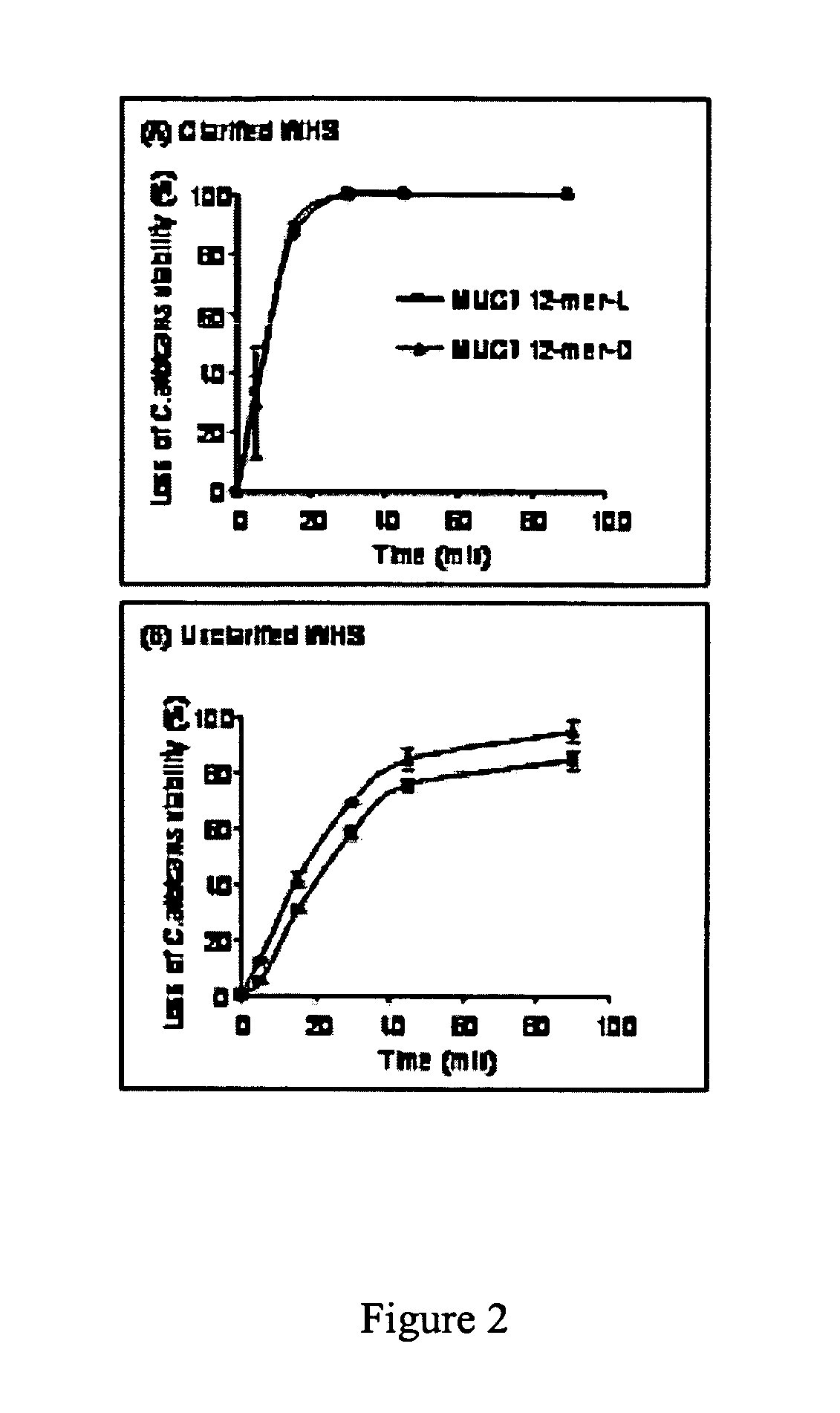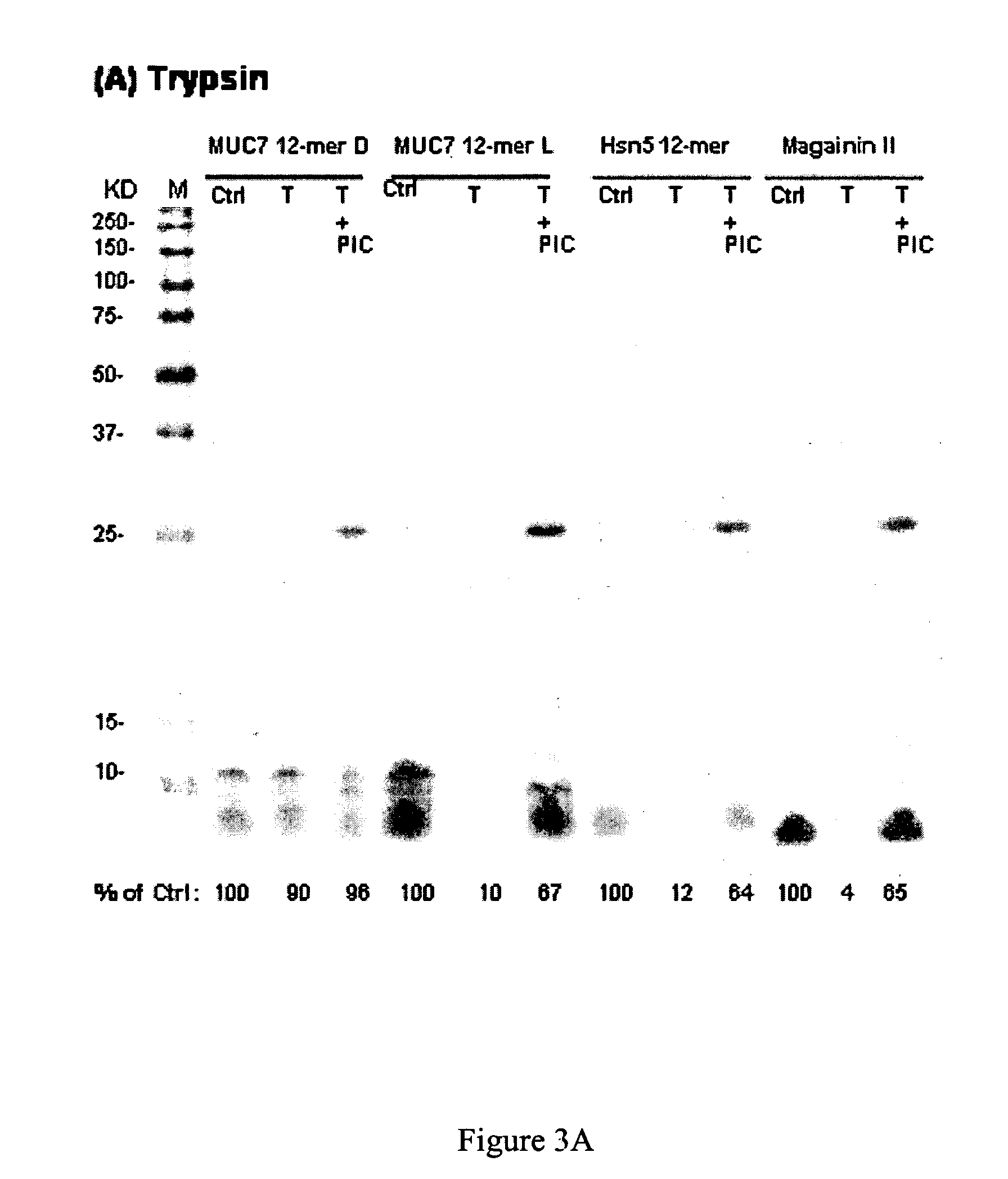D-isomers of antimicrobial peptide
a technology of antimicrobial peptides and isomers, which is applied in the direction of antibacterial agents, peptide/protein ingredients, drug compositions, etc., can solve the problems of invasive fungal infections, many currently available and clinically used antimicrobial drugs have undesirable toxic and other side effects, and the information on the antimicrobial activity of the camps in vivo is very limited
- Summary
- Abstract
- Description
- Claims
- Application Information
AI Technical Summary
Benefits of technology
Problems solved by technology
Method used
Image
Examples
example 1
Materials and Methods
[0028]Fungal strains and growth media. C. albicans DIS was kindly provided by M. Edgerton, Department of Biology, State University of New York, Buffalo. C. albicans ATCC 96112, C. glabrata ATCC 90030, were purchased from ATCC. An azole-resistant clinical isolate of C. glabrata 65C was kindly provided by John E. Bennett, National Institute of Allergy and Infectious Diseases, Bethesda, Md.). A clinical isolate of C. krusei was obtained from the Erie County Medical Center, Buffalo, N.Y. The fungal strains were stored at −80° C. in glycerol. For each experiment, cells were cultured freshly from frozen stock on Sabouraud Dextrose Agar (SDA, Difco) for 24 hours at 37° C. To prepare fungal cell, one colony was picked from the plate and resuspended in 10 mM sodium phosphate buffer (pH 7.4). The concentration was adjusted to 1×105 cells / ml for the antifungal activity assay.
[0029]Peptides. MUC7 12-mer-L (RKSYKCLHKRCR (SEQ ID NO:1), residues 40-51 of the parent MUC7), MUC7...
example 2
[0047]This example demonstrates the in vivo antifungal efficacy of MUC7 12-mer peptides (L and D), in a murine oral candidiasis model (36) as compared to the activity of known antifungal agents, amphotericin B and clotrimazole, and the salivary peptide, Hsn5 12-mer. The efficacy of these peptides was compared for combating infection by C. albicans.
Materials and Methods
Materials
[0048]Tetracycline hydrochloride from Fort Dodge Animal Health, Fort Dodge, Iowa; Clotrimazole,(1-[o-chloro-a,a-diphenylbenzyl]-imidazole) and Amphotericin B from Spectrum Chemical Mfg Corp, Dardena, Calif.; Sabouraud Dextrose Agar, Brain Heart Infusion Agar and Bacto agar from Difco, Becton, Dickinson and Company, Sparks, Md.; Prednisolone, Chlorpromazine hydrochloride, Streptomycin sulfate and Protease Inhibitor Cocktail from Sigma-Aldrich, St. Louis, Mo.; Pluronic F127 from Gallipot Inc., Minn.; Calcium alginate swabs from Fischer Scientific, Fair Lawn, N.J.; Synthetic MUC7 12-mer (L and D) and Hsn5 12-mer...
example 4
[0065]This example demonstrates the effectiveness of MUC7 12-mer-D and MUC7 12-mer-L in inhibiting or preventing the formation of oral biofilm. To illustrate this embodiment, we examined the effect of these peptides on the formation and eradication of S. mutans biofilm.
Materials and Methods
Peptides and Chemicals
[0066]MUC7 12-mer-L (RKSYKCLHKRCR—SEQ ID NO:1, aa 40-51 of the parent MUC7), MUC7-12-mer-D (D amino acid isomer), MUC7-20-mer (LAHQKPFIRKSYKCLHKRCR—SEQ ID NO:4, aa 32-51 of the parent human salivary mucin, MUC7), Hsn5 12-mer (AKRHHGYKRKFH, aa 4-15 of the parent Hsn5), and Magainin-II (GIGKFLHSAKKFGKAFVGEIMNS (SEQ ID NO:3), 24 aa peptide from frog skin) were custom-synthesized by Bio-Synthesis (Lewisville, Tex.). The company analyzed the prepared peptides by HPLC and mass spectrometry. The purity (>70%) was taken into consideration in preparation of the stock solution of each peptide for antifungal assays. The peptides were dissolved in sterile dd-water at 1 mg / mL; aliquots we...
PUM
| Property | Measurement | Unit |
|---|---|---|
| OD | aaaaa | aaaaa |
| pH | aaaaa | aaaaa |
| pore size | aaaaa | aaaaa |
Abstract
Description
Claims
Application Information
 Login to View More
Login to View More - R&D
- Intellectual Property
- Life Sciences
- Materials
- Tech Scout
- Unparalleled Data Quality
- Higher Quality Content
- 60% Fewer Hallucinations
Browse by: Latest US Patents, China's latest patents, Technical Efficacy Thesaurus, Application Domain, Technology Topic, Popular Technical Reports.
© 2025 PatSnap. All rights reserved.Legal|Privacy policy|Modern Slavery Act Transparency Statement|Sitemap|About US| Contact US: help@patsnap.com



